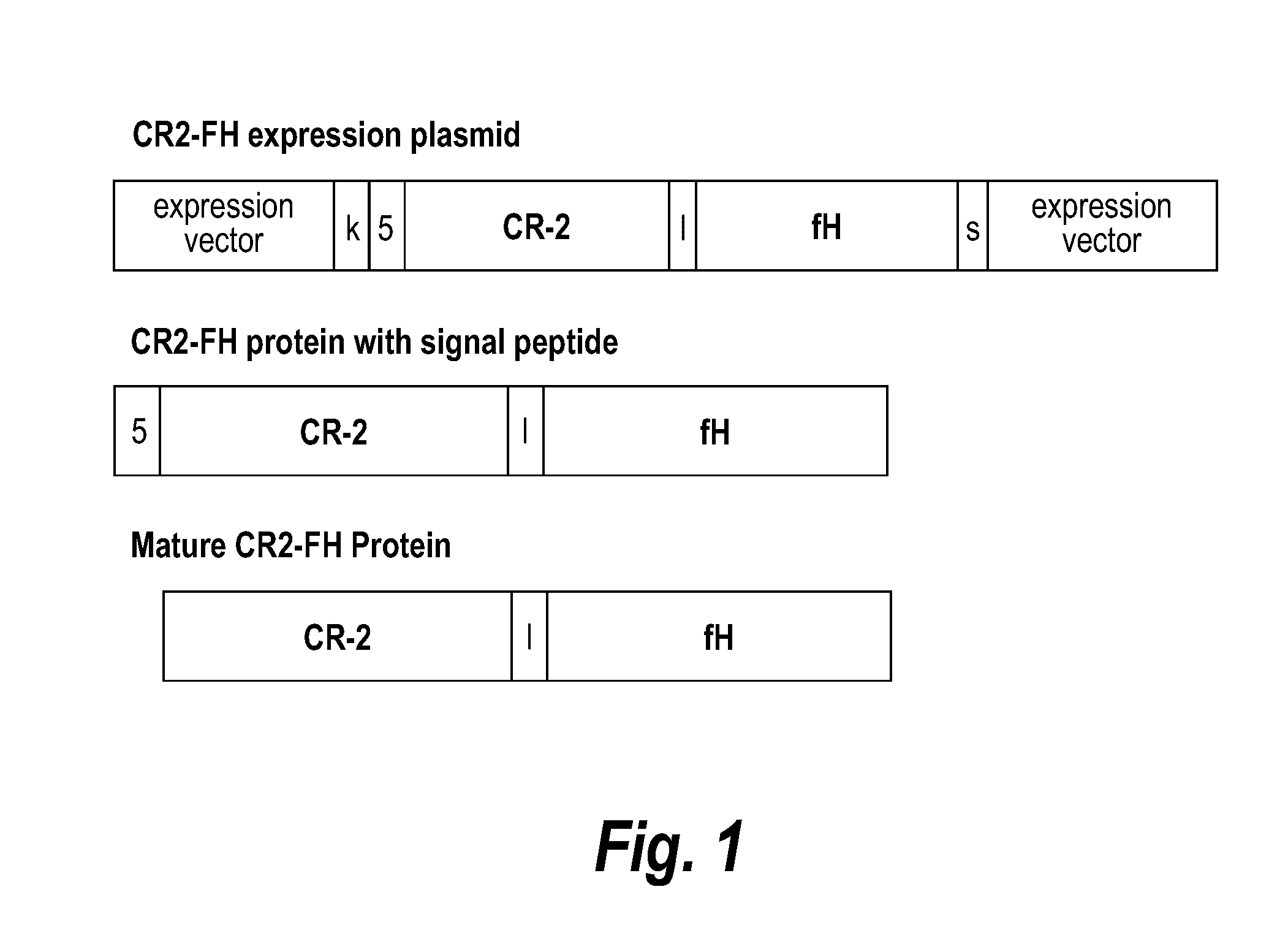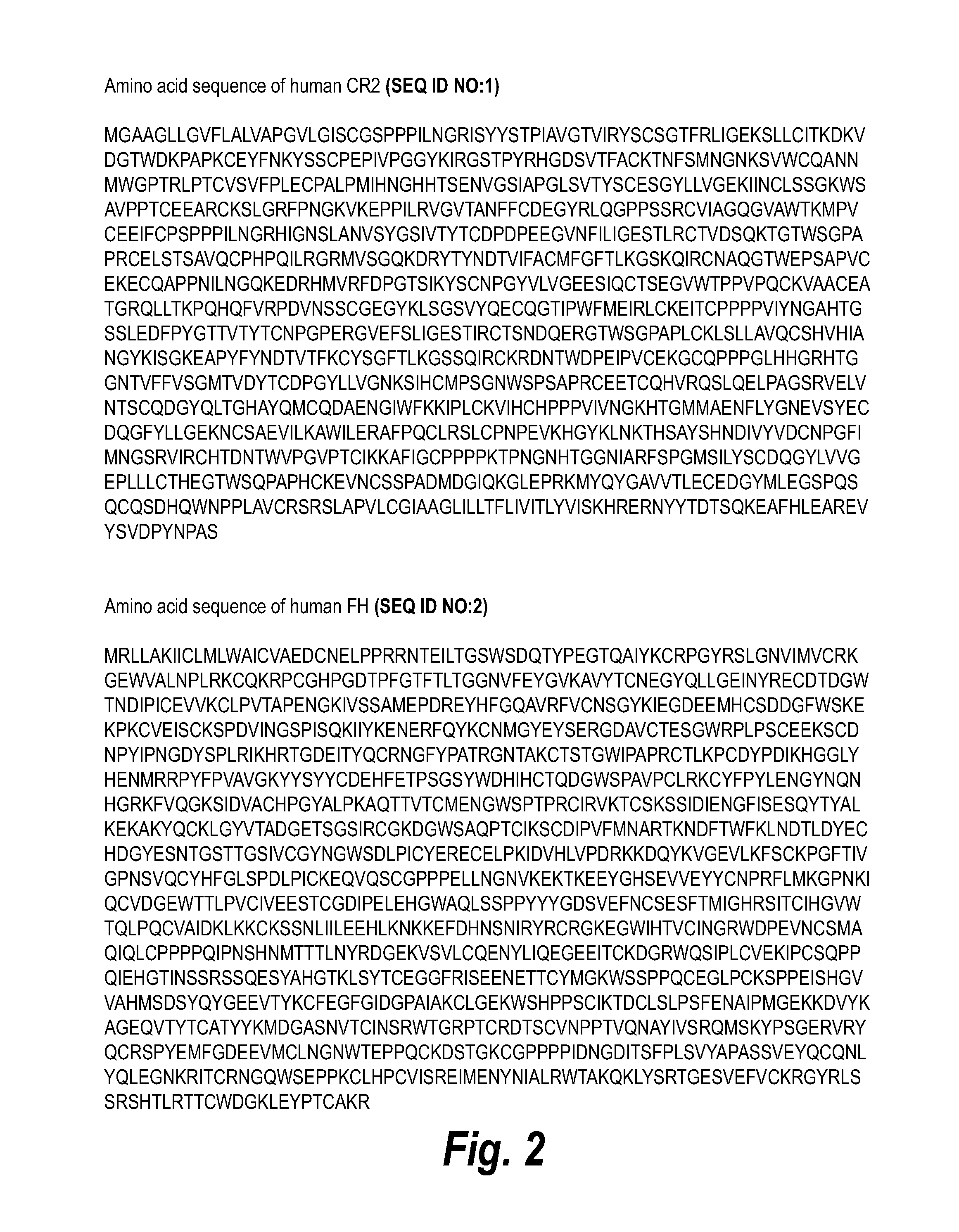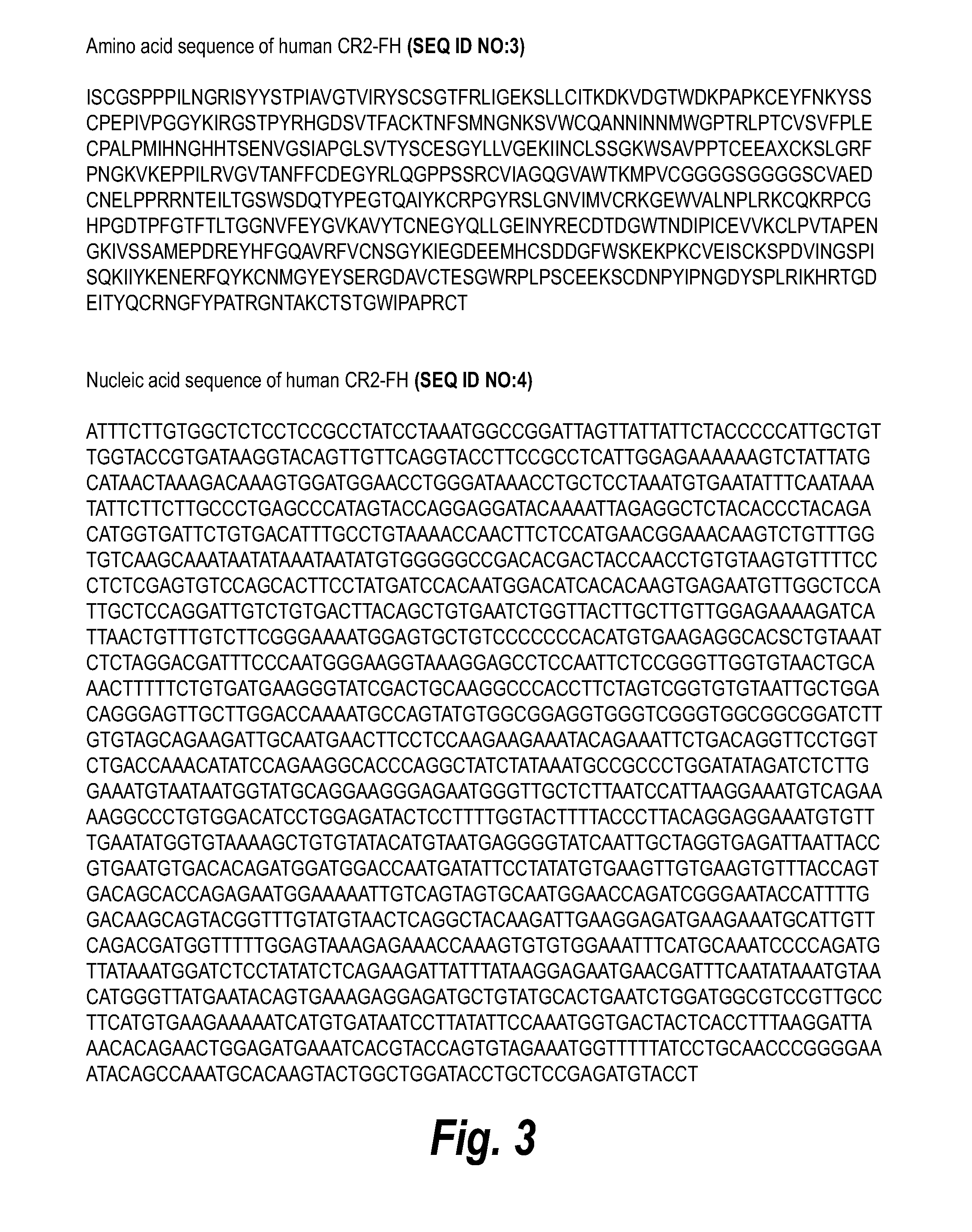Treatment of graft rejection by administering a complement inhibitor to an organ prior to transplant
a technology of complement inhibitors and organs, applied in the direction of antibody medical ingredients, immunological disorders, peptide/protein ingredients, etc., can solve the problems of premature failure of transplanted organ function, limited application, and increased shortage of donors, so as to minimize the impact on the recipient's innate immune responses and facilitate penetration of the organ
- Summary
- Abstract
- Description
- Claims
- Application Information
AI Technical Summary
Benefits of technology
Problems solved by technology
Method used
Image
Examples
example 1
Methods
Animals and Immunosuppressive Drugs
[0145]Male adult C3H (H-2k) mice and BALB / c (H-2d) mice (Jackson Labs, Bar Harbor, Me.) weighing 25-30 g were chosen as donors and recipients, respectively. In the groups receiving immunosuppression, the recipients were injected with CsA (15 mg / kg / day, s.c., daily from day 0 to endpoint rejection or until day 100), or with CyP (40 mg / kg / day, i.v., on day 0 and 1), or with anti-C5 mAb (clone BB5.1, Alexion Pharmaceuticals Inc.
Standard Hemolysis Assay Using Chicken Cells
[0146]Blood cell hemolysis assays can be carried out in many ways as common knowledge known in the art, for example, in Wang et al. (2007) Inhibition of Terminal Complement Components in Presensitized Transplant Recipients Prevents Antibody-Mediated Rejection Leading to Long-Term Graft Survival and Accommodation. The Journal of Immunology, 179: 4451-4463. An exemplary method was given as below:
Reagents:
[0147]GVBS buffer (containing Mg2+ and Ca2+) was obtained from Complement Te...
example 2
TT30 Effectively Inhibits Complement Alternative Pathway in Rat Serum
[0160]Anti-C5 monoclonal antibody 18A10 (an anti-rat C5 antibody) and human TT30 (CR2-FH) were incubated with healthy rat serum to evaluate the capacity to inhibit the classical (CCP) and alternative (CAP) complement pathways, respectively. The potency of anti-C5 monoclonal antibody was measured as inhibition of CCP by using sensitized chicken red blood cells (RBCs) and for lysis in 50% Lewis rat serum at 37° C. for 30 minutes. The potency of hTT30 was measured as inhibition of CAP by using rabbit RBCs for lysis in 20% Lewis rat serum at 37° C. for 30 minutes. hTT30 was added into rat serum at different concentration (up to 500 nM) alone or in the presence of excess anti-huCR2 monoclonal antibody (anti-CR2 to hTT30 ratio is 2:1). Data represent mean±SEM. As shown in FIG. 14, anti-C5 antibody and hTT30 effectively inhibit CCP and CAP, respectively. The co-treatment of anti-CR2 antibody did not abolish the inhibition...
example 3
Inhibition of Complement Alternative Pathway by Treatment of Kidney with TT30 Prior to Transplantation Improves Graft Survival
[0161]Lewis to Lewis rat orthotropic kidney transplantation was performed with or without treatment of anti-rat C5 monoclonal antibody or hTT30. Rat kidneys were perfused with ice-cold University of Wisconsin solution (UW) with or without therapeutic agent (anti-C5: 200 μg / mL; hTT30: 130 μg / mL, or isotype-matched antibody: 200 μg / mL). Perfusions were performed using a syringe using constant pressure. The kidney was then excised and placed in ice-cold perfusion solution (UW solution with or without therapeutic agents of a same concentration) for the period of cold ischemia at 4° C. for 28 hours. The kidneys were perfused a second time with ice-cold UW solution before transplantation to syngeneic recipients.
Results:
[0162]Median survival was 3 days post-transplantation for the rats receiving organs from the control groups, while animals receiving hTT30 or anti-C...
PUM
| Property | Measurement | Unit |
|---|---|---|
| molecular weight | aaaaa | aaaaa |
| molecular weight | aaaaa | aaaaa |
| molecular weight | aaaaa | aaaaa |
Abstract
Description
Claims
Application Information
 Login to View More
Login to View More - R&D
- Intellectual Property
- Life Sciences
- Materials
- Tech Scout
- Unparalleled Data Quality
- Higher Quality Content
- 60% Fewer Hallucinations
Browse by: Latest US Patents, China's latest patents, Technical Efficacy Thesaurus, Application Domain, Technology Topic, Popular Technical Reports.
© 2025 PatSnap. All rights reserved.Legal|Privacy policy|Modern Slavery Act Transparency Statement|Sitemap|About US| Contact US: help@patsnap.com



